You know that pain under your left breast that’s keeping you up at night? It might not be your heart. There are a bunch of other things it could be. Breast pain can be a sign of several medical conditions. Some are serious, while others are less serious.
Why You Might Have Pain Under Your Left Breast
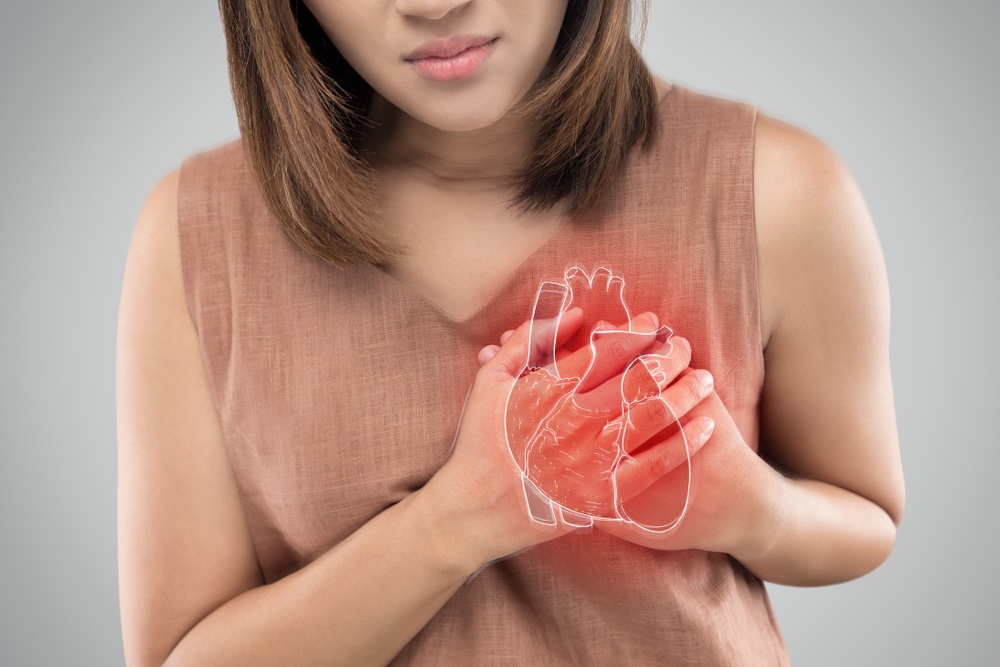
Pain under your left breast could mean a heart condition, yes. It could also mean many other things. Some of these could be serious, others much less so. Knowing about the various reasons can help guide you toward determining what you might be experiencing. As always, when in doubt, see a doctor. Here are some common causes of breast pain, along with what you should do if you have it.
Read More: The Surprising Difference Between Heart Attack and Cardiac Arrest
1. Muscle soreness
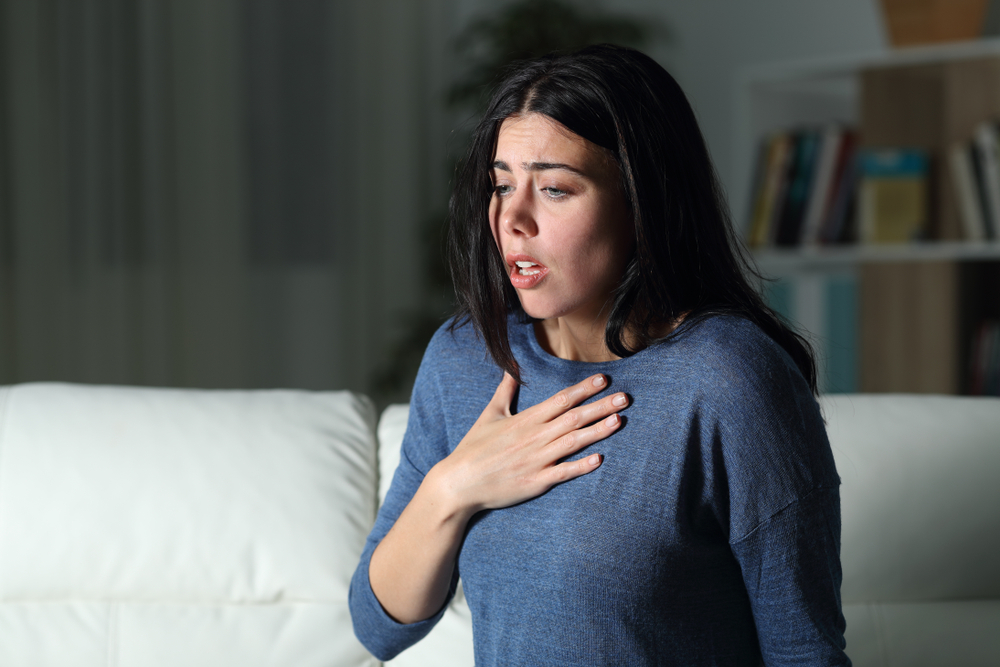
Your pain could actually be caused by muscle soreness in your chest. This is usually caused by strenuous activities like running or weightlifting. If the pain is located at the front of your chest, you could be experiencing pectoralis major muscle soreness. This type of soreness can also be caused by a sports injury or overexertion. Usually, this muscle soreness, known as Delayed Onset Muscle Soreness (aka DOMS), will go away within a few days. If it doesn’t, talk to your doctor. (1)
2. Acid reflux
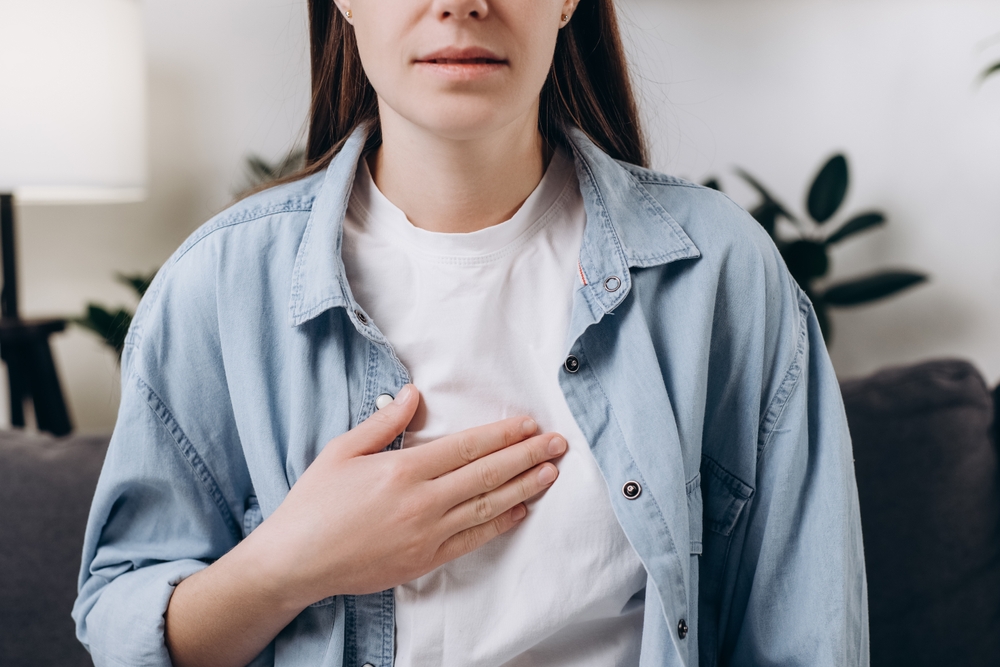
If you eat spicy foods or drink alcohol, it could cause acid reflux in your chest area—and acid reflux can hurt like crazy! If you’re experiencing chest pain after eating spicy foods or drinking alcohol, it could be acid reflux. Acid reflux is caused by stomach acid traveling up the esophagus, which can cause heartburn and chest pain. Oftentimes this type of pain will go away on its own within a few hours or days. However, if it doesn’t go away or worsens, talk to your doctor about treatment options. (2)
3. Tietze syndrome
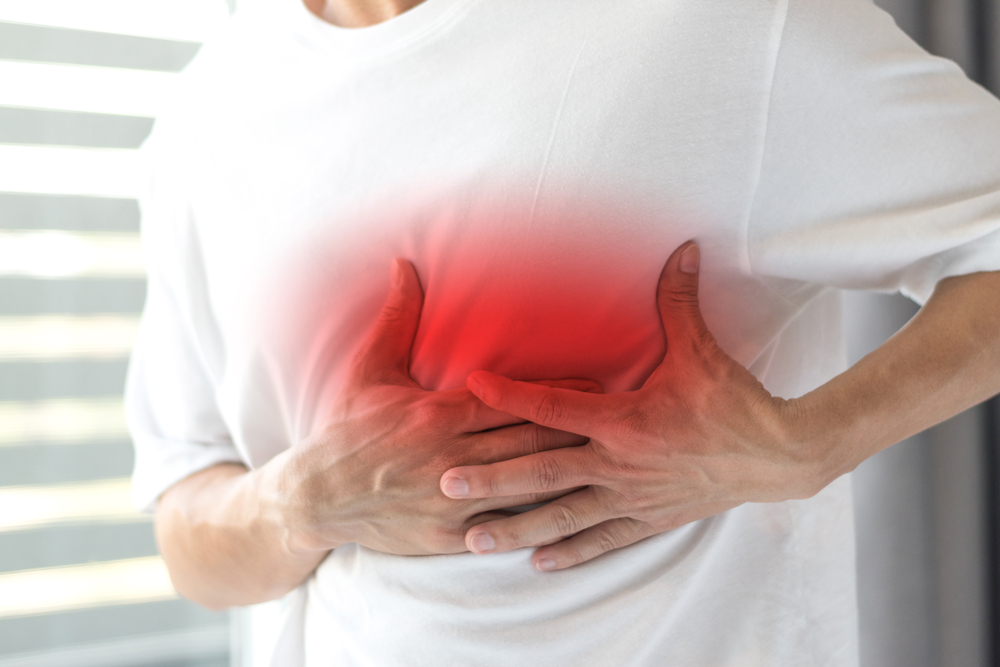
Tietze syndrome is when you have connective tissue around the rib cage that gets inflamed after an injury or surgery. That inflammation can cause pain and swelling in the area around your breastbone and ribs on one side of your body—but not necessarily both sides! This condition tends to resolve itself within six weeks, but if yours doesn’t go away on its own within that time frame, make sure to talk with your doctor about it so they can help figure out what’s going on (and if anything needs treatment). (3)
4. Costochondritis
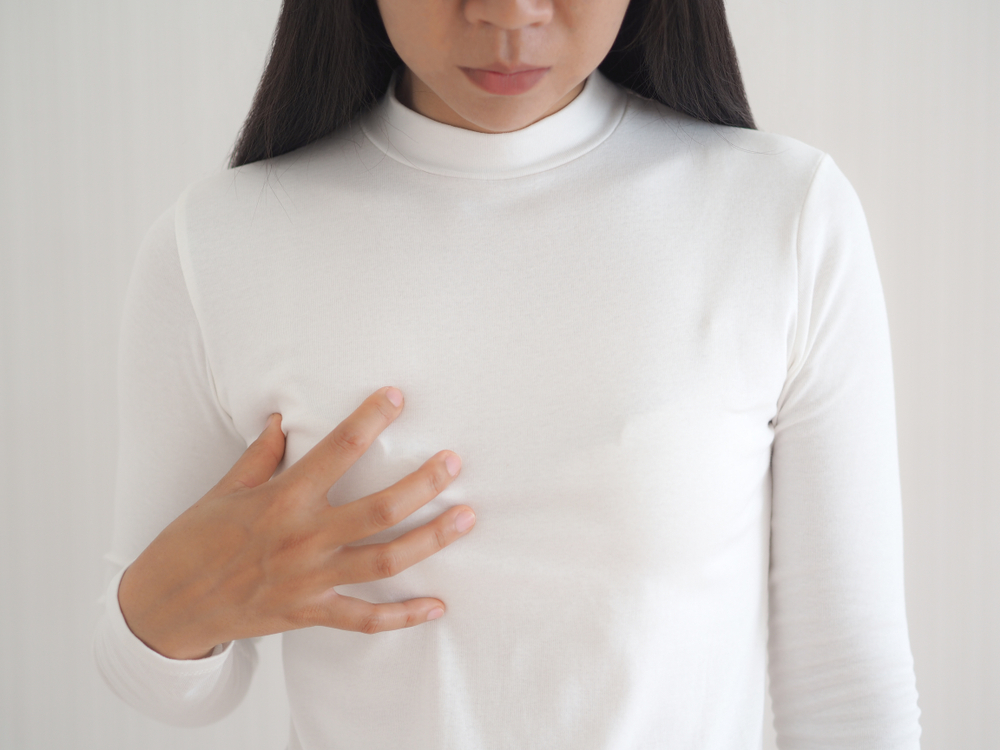
Costochondritis is an inflammation of the cartilage that connects your ribs to your breastbone. When this inflammation occurs, it can cause pain and tenderness over the area where the ribs connect to the breastbone. The condition usually goes away on its own within a few weeks or months. Again, talk to your doctor if yours doesn’t go away. (4)
5. Pleurisy
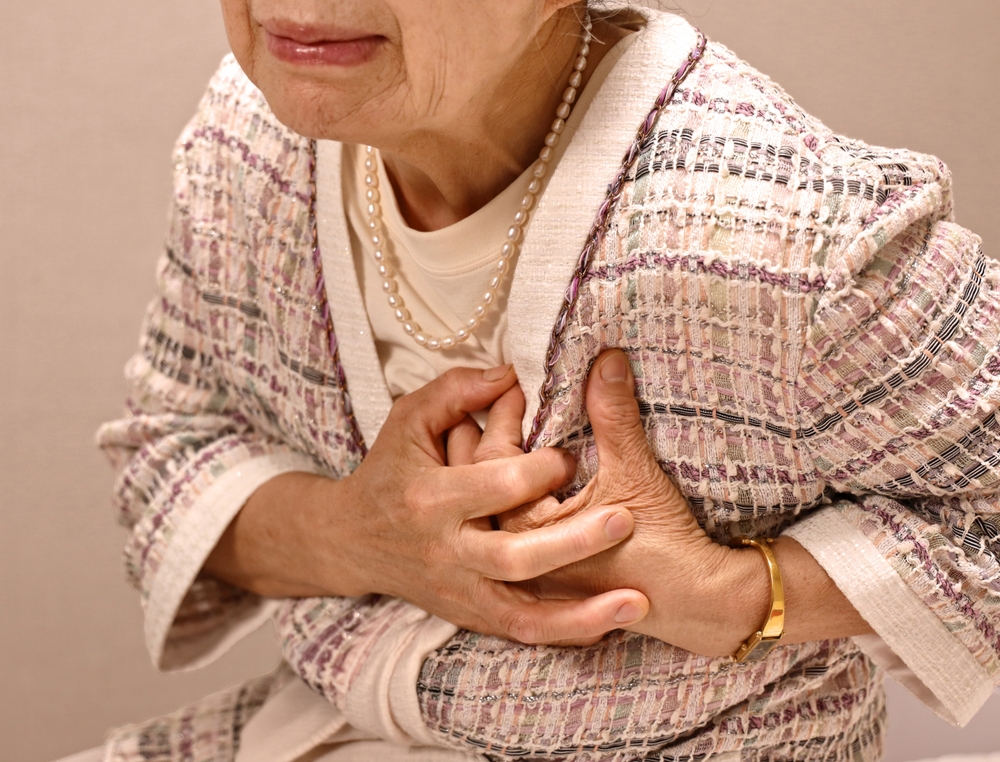
Pleurisy is an inflammation of the pleura, which is a membrane that covers your lungs and lines their inside walls. When this inflammation occurs, it can cause pain and tenderness over the area where the lungs connect to one another (and where they connect to your chest wall). The condition usually goes away on its own within a few weeks or months. If yours doesn’t go away on its own within that time frame, go see your doctor. (5)
Read More: How Fast Do You Walk? It Could Predict Your Heart Disease Risk
6. Pericarditis
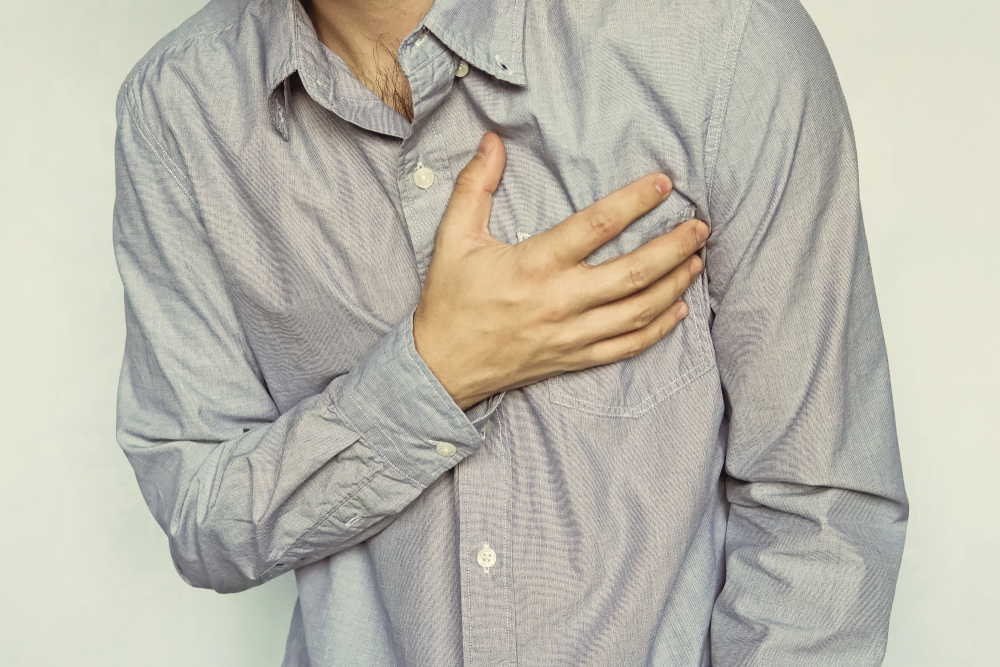
Pericarditis is an inflammation of the pericardium. The pericardium is a membrane that surrounds your heart and isolates it from other organs in your body. If you have pericarditis, this membrane can become inflamed and cause pain around your chest area as well as other symptoms like fever, chills, cough, fatigue, or swelling in one or both legs. (6)
7. Hiatal Hernia

A hiatal hernia is when part of your stomach moves up into your chest through an opening in the diaphragm. It occurs when the muscle separating the esophagus and stomach weakens, allowing part of your digestive tract to come through. The most common symptom is heartburn, although sometimes it can cause other symptoms like nausea or difficulty swallowing. (7)
8. Angina
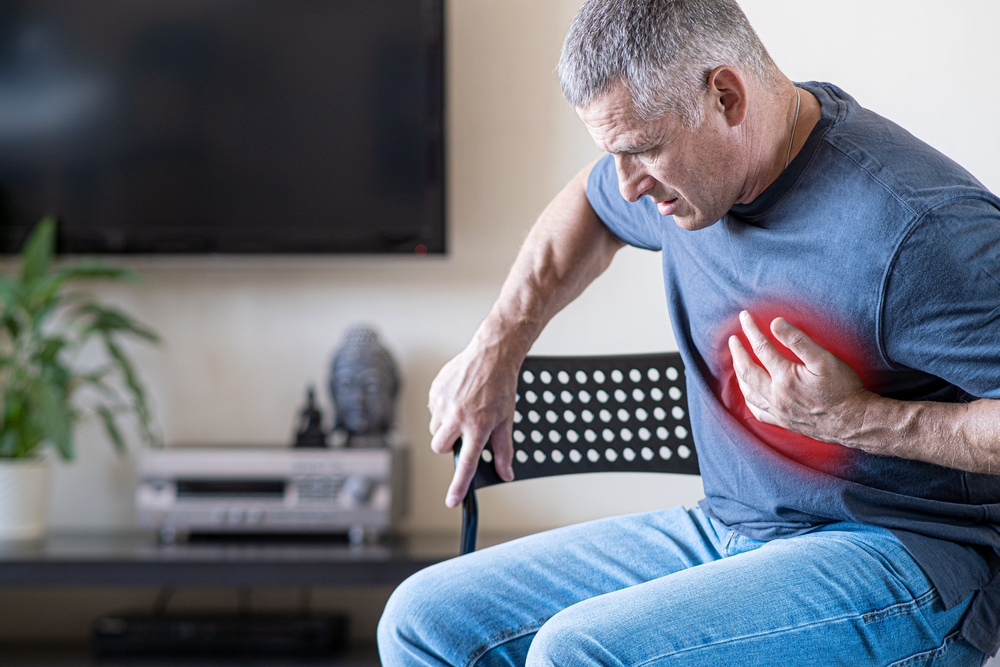
Angina is chest pain that occurs when your heart muscle doesn’t get enough oxygen-rich blood. This can happen because of coronary artery disease, which narrows or blocks the arteries that supply blood to your heart. You may feel pressure or heaviness in your chest, neck, throat, or shoulder area; pain or discomfort that spreads to your arms, jaw, or back; sweating; nausea; and lightheadedness. (8)
The Bottom Line
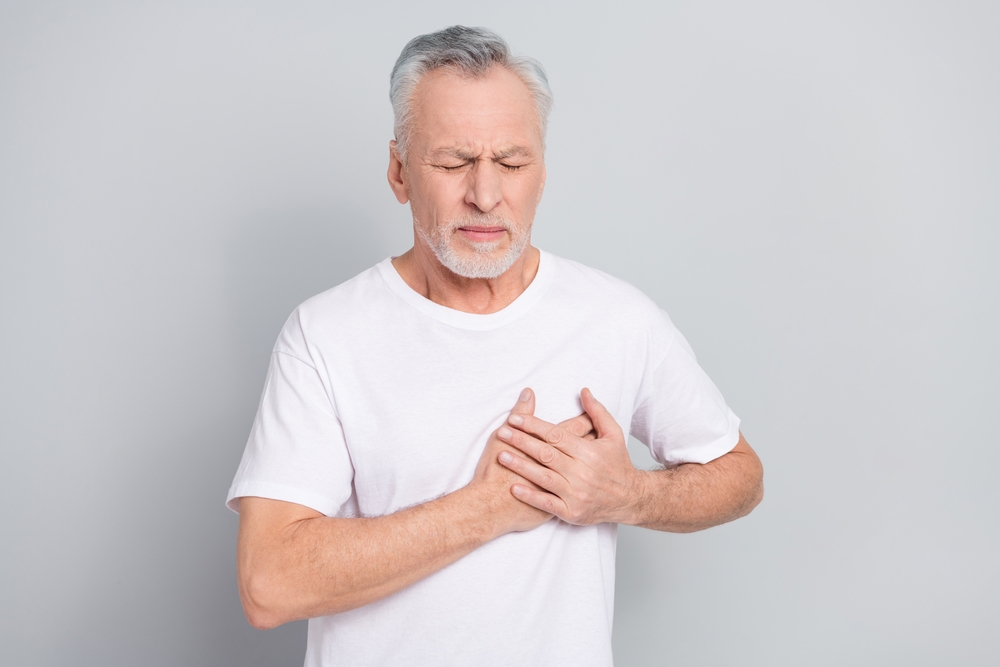
Sometimes pain can be easily explained away with something like sore muscles from a hard workout. When symptoms show up randomly, however, last longer than they should, or get worse rather than better over time, see your doctor. It could be a serious problem, but it could not be. Either way, they can help get you on the path to healing. If it is serious, it could save your life.
Sources
- “Delayed Onset Muscle Soreness.” ACSM
- “Gastroesophageal reflux disease (GERD).” Mayo Clinic
- “Tietze Syndrome” Cleveland Clinic
- “Costochondritis.” NHS Inform
- “Pleurisy.” Mayo Clinic
- “Pericarditis.” Mayo Clinic
- “Hiatal hernia.” Mount Sinai
- “Angina.” NHS
Disclaimer: This information is not intended to be a substitute for professional medical advice, diagnosis or treatment and is for information only. Always seek the advice of your physician or another qualified health provider with any questions about your medical condition and/or current medication. Do not disregard professional medical advice or delay seeking advice or treatment because of something you have read here.

